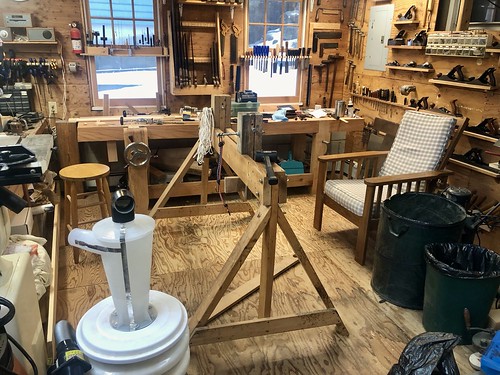
Recently, a friend who taught many of the photography workshops I’ve attended asked me to help him out with a woodworking problem: he has an antique workbench that he wants to put back into use, but he’s lost the knobs that went on the original tommy bars (handles) for the two wooden vises on the bench. He asked if I could reproduce them. I agreed, as I’d been thinking about building some things with wooden screws (e.g., nipping press for bookbinding) anyway, and wanted to get some of the tooling and skills needed for that. So I took on the project. We agreed that I’d build entire new handles, as matching the potentially unique screw threads on the original ones might be tough. The project has turned out to be an interesting journey…
While the spoke pointer and hollow auger would suffice to get me to a working wooden screw, making the knobs would require either turning or carving. The latter is certainly possible, but my friend I think is interested in getting knobs that are relatively similar, if not identical, to the originals. This requires turning. I have a micro lathe for turning small metal parts that could conceivably work for this, but as I’d been thinking about making larger screws in the future, it made sense for me to drag out my old bungee lathe, built back in 1997 or so from plans published by Don Weber in American Woodworker the previous fall. I’d set it up in my old shop, used it a bit, and then we renovated the house so it got disassembled and put away. It was high time I dragged out the pieces, reassembled it, and reminded myself how it all worked. Springpole lathe turning (the bungee is just a way of avoiding the space requirements of a long sapling) is reciprocal in nature: the turning tool is able to cut only when the workpiece is turned toward you by pressing down the treadle. As you let up, it springs back. It’s not all that difficult, but takes a bit of care to do properly, as it doesn’t have the power and speed of an electric lathe. But perfectly fine work is possible, as long as you have very sharp tools (low power, so the workpiece simply stops if you dig in too much) and learn some basic technique. Which I am still doing!